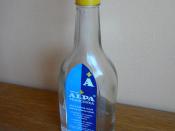Answer No. 1The Airline Pilot Association's safety and Technical Committee observes and operates on technical issues that could have an effect on pilots in the secure execution of their professional obligations and duties. The members of the Safety and Technical Committee act on behalf of ALPA members collectively or individually , in areas such as, but not limited to, Aircraft Design and Operation, Incidents and Accidents, Air Traffic Services, Human Factors, Transport of Hazardous Materials, Licensing, Helicopters, and Security and Medical issues (Retrieved from ALPA.org)In keeping with ALPA's constitutional objectives, to actively promote air safety, both in relation to the operation of aircraft and generally, members of the Safety and Technical committee are represented on many national and international aviation groups. These include airlines, airports, government agencies, industry and political groups. ALPA Safety and Technical members are both welcomed and encouraged to participate in many factions of aviation development both in Ireland and internationally.
The Safety and Technical committee is comprised of pilot volunteers, who donate their time and expertise to the research, debate and promotion of all facets of Aviation Safety. As well as being experienced professional pilots, most also bring with them skills and knowledge from previous careers and extra-curricular activities. These include doctors, lawyers, scientists, defence forces personnel, law enforcement agencies, information technology experts, aeronautical engineers, aircraft engineers and pilot training experts. Several members of the committee are qualified Air Accident Investigators and maintain an active relationship with the state agency with responsibility for air accident investigation, the Air Accident Investigation Unit.
The safety and technical commitee are also tasked with the running of the ALPA Accident Reaction plan, which is a 24 Hour monitoring system, to provide support to members of ALPA and affiliated overseas pilots in the event of an accident or incident.
Answer No. 2The Internal Evaluation Program is based on the premise that certificate holders are primarily responsible for continuously monitoring and ensuring that their operations are safe and in compliance with the CASR.
Air carrier certificate holders operating interested in developing an Internal Evaluation Program are encouraged to include the following essential elements in their program:1.Independent / defined responsibility.
2.Top management review.
3.Continual process.
4.Internal evaluation schedule.
5.Corrective action plans.
6.RecordsIndependent / defined responsibilityA certificate holder's Internal Evaluation Program should identify the person and/or group within the organization who has the responsibility and authority to:â¢Perform evaluations, audits, and inspections as a part of an ongoing Internal Evaluation Program.
â¢Identify and record any findings or concerns, and the evidence necessary to substantiate findings or concerns.
â¢Initiate, recommend, or provide solutions to findings or concerns through designated reporting channels.
â¢Verify the implementation of solutions within a specific time.
â¢Communicate and coordinate activities with DGAC personnel on a regular basis.
Top Management ReviewAs a part of an Internal Evaluation Program, top management should review internal evaluation results to verify that satisfactory corrective actions have been implemented.
Continual ProcessIn order to effectively anticipate potential problem areas and correct them before actual findings occur, an Internal Evaluation Program should be a continual program, not merely spot check inspections of operating practices. Stand alone spot check inspections will do little more than identify symptoms of potential problems.
Internal Evaluation ScheduleTo be properly organized, a continual process should be a structured activity. For this reason, it is essential for a certificate holder's Internal Evaluation Program to include a defined schedule of activities.
Corrective Action PlanAn Internal Evaluation Program should include procedures to ensure that corrective action plans are developed in response to findings or concerns, and for monitoring corrective action plans to verify their timely and effective implementation and completion.
RecordsRecords documenting the performance and results of an Internal Evaluation Program should be maintained by the certificate holder. Records are considered to be the principal form of evidence. Documented evidence is essential in analyzing and determining the root causes of findings or concerns so that potential areas of noncompliance can be identified by the certificate holder. It is important to maintain accurate, complete, and reliable records that document the activities and results of an internal evaluation.
ReferencesALPA.org, Airline Pilot Association, International Retrieved from http://www.alpa.org/DesktopModules/ALPA_Documents/ on December 17, 2008.


